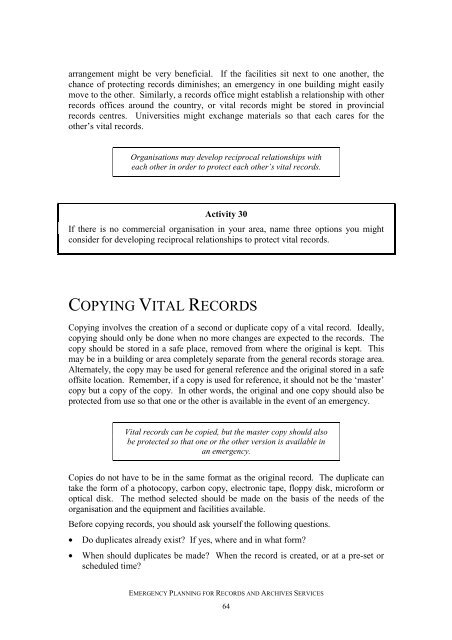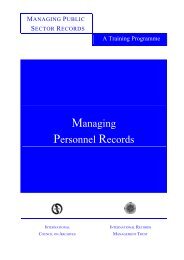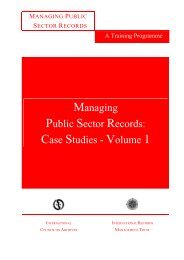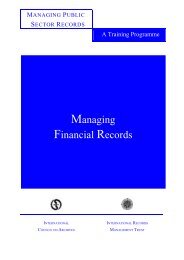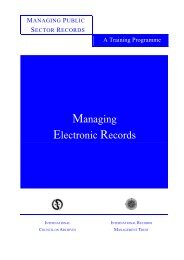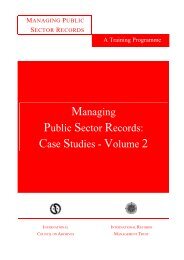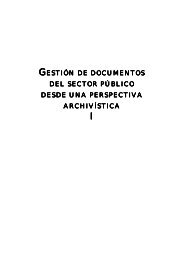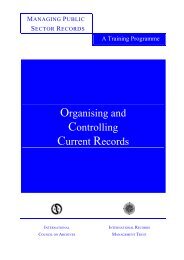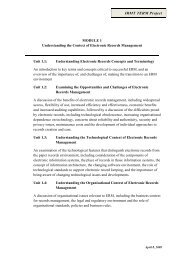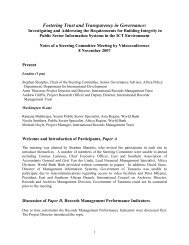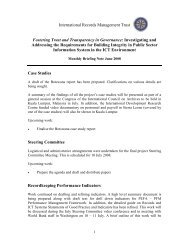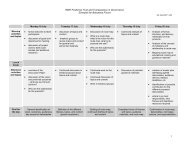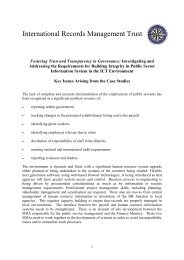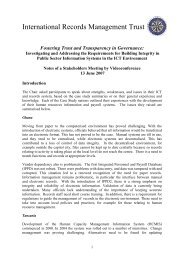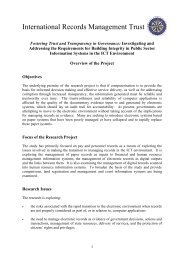disaster planning and control - International Records Management ...
disaster planning and control - International Records Management ...
disaster planning and control - International Records Management ...
Create successful ePaper yourself
Turn your PDF publications into a flip-book with our unique Google optimized e-Paper software.
arrangement might be very beneficial. If the facilities sit next to one another, the<br />
chance of protecting records diminishes; an emergency in one building might easily<br />
move to the other. Similarly, a records office might establish a relationship with other<br />
records offices around the country, or vital records might be stored in provincial<br />
records centres. Universities might exchange materials so that each cares for the<br />
other’s vital records.<br />
Organisations may develop reciprocal relationships with<br />
each other in order to protect each other’s vital records.<br />
Activity 30<br />
If there is no commercial organisation in your area, name three options you might<br />
consider for developing reciprocal relationships to protect vital records.<br />
COPYING VITAL RECORDS<br />
Copying involves the creation of a second or duplicate copy of a vital record. Ideally,<br />
copying should only be done when no more changes are expected to the records. The<br />
copy should be stored in a safe place, removed from where the original is kept. This<br />
may be in a building or area completely separate from the general records storage area.<br />
Alternately, the copy may be used for general reference <strong>and</strong> the original stored in a safe<br />
offsite location. Remember, if a copy is used for reference, it should not be the ‘master’<br />
copy but a copy of the copy. In other words, the original <strong>and</strong> one copy should also be<br />
protected from use so that one or the other is available in the event of an emergency.<br />
Vital records can be copied, but the master copy should also<br />
be protected so that one or the other version is available in<br />
an emergency.<br />
Copies do not have to be in the same format as the original record. The duplicate can<br />
take the form of a photocopy, carbon copy, electronic tape, floppy disk, microform or<br />
optical disk. The method selected should be made on the basis of the needs of the<br />
organisation <strong>and</strong> the equipment <strong>and</strong> facilities available.<br />
Before copying records, you should ask yourself the following questions.<br />
• Do duplicates already exist? If yes, where <strong>and</strong> in what form?<br />
• When should duplicates be made? When the record is created, or at a pre-set or<br />
scheduled time?<br />
EMERGENCY PLANNING FOR RECORDS AND ARCHIVES SERVICES<br />
64


